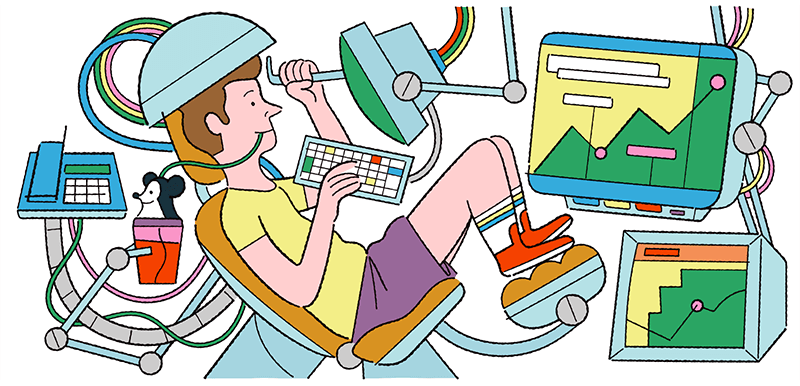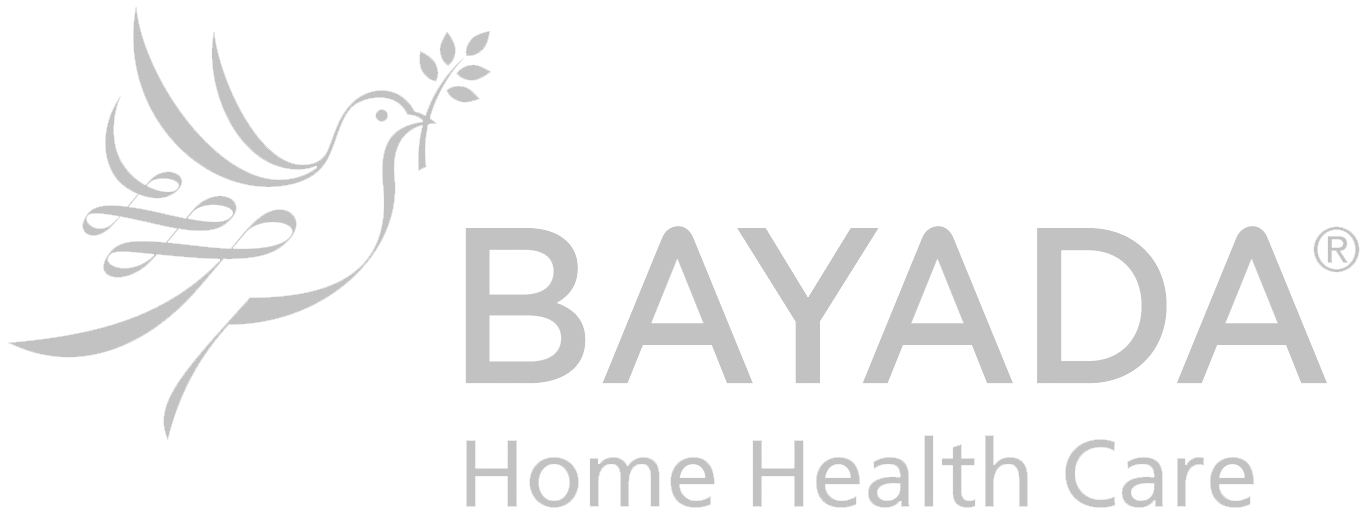10 Features of User-Friendly Call Center Outsourcing
- byGabby Rolette
- onApril 24, 2024
- inCall Center 101
Call center outsourcing is not always a business owner’s first thought. In fact, it’s usually their last thought after months or years of toiling away, trying to effectively manage operations on their own. But for all the ways that outsourcing can enable a business to achieve greater heights of customer satisfaction, along with a lighter workload, it is worth consideration at the outset of any new venture.
The real question isn’t whether to outsource, but rather, is call center outsourcing an uncomplicated, user-friendly process? How difficult is it to move in that direction? If you’re asking those questions, then you’re either a business owner looking to outsource customer communications or a call center working to establish the best possible system for your clients.
When business owners take the giant leap from managing all aspects of their operation in-house to placing control in the hands of the call center team, ensuring that their current business practices and procedures can be streamlined at the center is non-negotiable. Call centers hoping to attract and retain new clients must also achieve a seamless transition between the client’s operations and the call center’s capabilities. As you might imagine, there are a ton of factors to consider. To help you navigate the challenges and pitfalls of call center outsourcing, we’ve put together a list of important tips that will offer a bit of guidance to business owners and call centers alike. Read on to learn more about the features that make call center outsourcing a success.

#1. Offer a stress-free onboarding experience
Signing up for a call center service can be daunting, especially if you’ve never outsourced before. It can be hard to relate your needs effectively and relinquish some control over your customer communications. Add in a complicated onboarding process, and you’ve created a recipe for a major headache. A call center that prioritizes user-friendliness will have an easy onboarding process, including the following:
- Intake forms: Providing users with an intake form that they can fill out allows them to go at their own pace and take the time to figure out what they really want or need out of a call center service.
- Same-day setup: After a sales rep has spoken with a prospective client and gathered what they need, getting their account set up swiftly will help alleviate stress and boost client satisfaction. When clients have to wait a day or longer for their service to begin, call centers run the risk of losing those clients to other competitors who can guarantee same-day setup.
- Periodic check-ins: It’s important to make every client feel comfortable and taken care of, but especially recent signups. Regular check-ins throughout the onboarding experience will help call centers get an idea of how systems are performing and if changes are needed. Additionally, check-ins help foster a level of trust between the call center and the client, thus creating a positive working relationship.

#2. Implement agent training and quality assurance protocols
Offering exceptional support to callers starts with exceptional training. Whether monthly courses or weekly refreshers, agent training shouldn’t be a one-and-done type thing. Call center agents should be receiving continuous training, not only on the systems they use but also on customer service and problem solving techniques to guarantee they are able to help all callers to the best of their abilities.
To monitor and maintain call quality and agent performance, the call center should have a dedicated quality assurance team that reviews calls daily. While some call centers may allow clients to listen to their own calls within an online portal, it is the quality assurance team’s responsibility to regularly evaluate agent performance, identify issues, and immediately address concerns with coaching sessions or further training.

#3. Build a user-friendly platform
Another great way to design the most user-friendly call center experience for clients is to provide them access to an online portal or dashboard that allows them to review messages, listen to calls, and make updates as needed. The more user-friendly the system, the more clients will be encouraged to log in, access details, and stay in the loop. A well-developed online portal should include the following:
- Message details & delivery: Users should be able to view message details for all of the calls that come into the service as well as listen to and rate call recordings. Additionally, they will appreciate the ability to quickly update message delivery options.
- Call scripts: Giving users access to their own call scripts allows them to stay in the loop and confirm that agents are always gathering the correct information and following current procedures of how their calls are being handled and make updates as needed.
- On-call schedules: If clients are utilizing an on-call system, then it would make sense to allow clients to access and modify those schedules and make updates. If there’s a last-minute change outside of the call center’s support hours, users can check to see that the schedule is accurate and emergencies are directed appropriately.
- FAQs: Including a portal area where users can add Frequently Asked Questions will allow clients to empower agents with business information. FAQs can include details such as the services you provide, pricing options, and your business hours and location.
- Reports: Reporting is an essential tool that allows clients to see their usage statistics at a glance. Viewing this information can help a business determine if they need to update call handling to accommodate slower times, and it can be useful for tracking responses to marketing efforts and promotional media.

#4. Create a comprehensive knowledge base
In order for a call center to make sure outsourcing is as effortless as possible, creating a solid, accessible knowledge base is paramount. Clients can rest easy knowing that they have answers to most questions at their fingertips. They will also have full control over their call handling and the freedom to make updates with the help of in-depth tutorials.
A thorough knowledge base cuts down on the need for users to reach out to the call center directly to ask questions, and the ability to adjust scripting may eliminate or decrease the need for the center to assess programming fees for account changes. When users are offered the option to manage their own updates, they wind up saving money and creating a sense of self assuredness that will encourage them to continue trying things on their own before reaching out for help. In order for a knowledge base to be a valuable resource, the following points should be taken into consideration:
- Break it down: Breaking down your tutorials into categories and subcategories makes it easier for users to find what they’re looking for. For example, categories may look something like Getting Started, Billing, Programming, General, etc.
- Use strong keywords: Unless a user knows the name of the exact article they are looking for, it may be difficult to locate the correct article even with clear categories. For every article that you create, be sure to include a handful of searchable keywords.
- Create step-by-step instructions: If you want to encourage users to refer to the knowledge base to learn more about platform functionality, then your articles need to be organized with step-by-step instructions that concisely lay out how to accomplish whatever update or task they are aiming to complete.
- Implement media: Words alone won’t suffice when developing a user-friendly knowledge base. Be sure to include reference images or video tutorials when applicable. Not only do images and videos help facilitate the learning process for most people, but you’ll also be catering to clients who are better able to follow visual and auditory cues.

#5. Development a convenient mobile app
The more convenient a product or service is to use, the more user-friendly it becomes, and that concept is certainly true of a mobile app. Our mobile phones have become so ingrained in our everyday lives that they’re basically an extension of ourselves. It only makes sense that a practical mobile app would make an appearance on this list.
The advantages of a mobile app are clear. Checking messages, listening to calls, reviewing reports or making changes on the go creates the ideal call center experience and bridges the gap between call center and in-office communications. Employees on the go can enter notes right from their app to have in-office employees follow up on specific calls, and users can add alerts to inform agents of last-minute closures or delays due to weather.

#6. Offer quality of life software
Call centers are supposed to smooth out wrinkles in the day-to-day operations that make running a business a challenge. The more quality-of-life features built into the client-facing user interface, the more time clients will have to focus on retaining existing customers and drumming up new leads. Here are a few examples:
- Integrations: If a call center doesn’t offer any apps that integrate with systems you’re already using, like CRM platforms or help desk ticketing software, then how much work are they really taking off your plate? Sure, they can triage calls and take messages, but if those messages still have to be manually entered into your own database after the fact, then you’re just doing double the work. With the option to automatically push customer data into a client’s CRM or lead management platform after each call, everyone will be on the same page.
- IVR: Interactive Voice Response, or IVR, is an automated system that can route callers according to a prompt. While call centers should place focus on live answering, not every call actually needs to be handled by a live person. Some callers may have questions that can be answered via a pre-recorded IVR message, or the IVR can be set to automatically route callers to the appropriate person or department. Automated systems can seriously reduce operator talk time, leading to lower monthly invoices and offering a way for callers to be able to assist themselves.
- Emergency Dispatch: If your business deals with emergency situations, then so should your call center. A call center that offers emergency dispatch should allow clients to implement or update their on-call procedures so that they can ensure the correct people are being contacted and urgent calls are being dispatched in a timely manner.

#7. Offer omni-channel support
Call centers that offer omni-channel support to their clients are the norm. But allowing clients to configure multiple channels of communication for their own customers via the call center’s software is a huge perk. For example, when a customer calls in to a business and they reach a call center, they probably expect to leave their information and get a call back.
What if they could choose the mode of communication that works best for them? And what if the client could connect with those customers from their secure online portal, keeping all points of contact in one place? Whether texting, emailing, or a good old-fashioned phone conversation that can be initiated directly from the user interface call log, customizing communication preferences and facilitating lead follow up ensures that you’ll capture – and retain – more customers.

#8. Allow potential clients to try out your service for free
There’s no better way to get business owners to test out a call center service than offering it to them for free. A user-friendly call center should have some sort of free trial program that gives potential clients a chance to experience the service with zero obligation. This time period is excellent for ironing out kinks and fine-tuning procedures without any financial risk. Free trial periods are also a great way to get fresh eyes on a service, thus generating more opportunities for feedback and allowing a company to build trust with their customer base.
If you’re considering signing up for a call center’s free trial, here are some helpful hints to get the most out of your trial:
- Place test calls: If you’re not ready to “go live” with a call center, use the free trial period to place mock phone calls instead. This will allow you to hear how the agents sound and get an idea of how calls will flow.
- Refine your scripting: A free trial gives you time to play around and figure out what exactly you want out of a service. Do you want all calls to be handled the same way, or do you want the service to ask driving questions that alter the direction of the call? For example, a non-urgent call can result in a message whereas an urgent call can be transferred or dispatched to your on-call staff.
- Review messaging options: Depending on how you want your script to be set up, you may also want different messaging options based on the call result. For example, can calls to specific people be sent to them directly? Can you customize the way messages are sent? Can you opt out of receiving notifications of calls that don’t result in a message?
- Take advantage of extra features: If the call center offers features like IVR, callbacks, or app integrations, take a moment to try those out and see if they’d be a good fit for your needs. Businesses currently struggling with telemarketers or robo calls can use an IVR to sidestep that traffic without driving up your invoice. If you want an opportunity to catch callers who hang up before speaking with someone, ask if the call center offers call back options that can automatically place an outbound call to people who disconnect while in queue.

#9. Ability to scale up or down as call volume fluctuates
The ability for a call center to scale up or down as call volume fluctuates is important on two fronts: the first being the center’s capabilities in handling increased volume, and the second being its ability for clients to adjust rate plans based on volume.
For a call center to be able to handle high amounts of call volume without forcing its callers into long queues, they must not only look at past trends and staff up accordingly, but they should also employ queue-based routing technology that can redirect calls to other available agents if the general pool is already occupied. For call center services that utilize multiple centers in different locations, queue-based routing can be adjusted to send calls to those other centers, as needed. This type of technology decreases the number of callers that hang up while waiting, thus increasing lead capture and customer retention.
On the client side, it’s important for a call center to understand that not all businesses have static call volume, and to create a pricing structure that accounts for that. For example, seasonal businesses like tax preparers, landscapers and holiday merchants will see higher call volume during certain months and will experience a drop during their off season. Call centers that can automatically adjust clients to the proper plan based on their call volume will ensure that clients are not overpaying for service or looking to cancel when their volume inevitably dips.

#10. Offer industry specific scripting options
Cookie cutter processes may work for some businesses, but not in the call center world. Since call centers typically work with hundreds of different industries, they need to be able to handle all different types of calls, which means their scripting platform needs to be both flexible and customizable to account for all possibilities.
From simple message taking to appointment scheduling, transfers, reach on-calls and more, a call center that can offer multiple scripting options based on specific industry needs will enhance the customer experience, improve efficiency, accuracy, and overall client satisfaction. Let’s take a look at some examples below:
HVAC
HVAC scripts may start with a driving question to determine if the caller needs HVAC or plumbing assistance. From there, agents could gather the caller’s information and schedule an appointment on the appropriate calendar based on the need. HVAC scripts could also include some troubleshooting instructions to determine if an appointment is necessary. For example, agents can walk callers through how to change a filter or reset a thermostat.
Medical
Medical scripts may start with a driving question to determine if the caller is having an emergency or not. Emergency calls can result in a reach out to the on-call doctor, whereas non emergency calls can result in a message taken. Medical scripts could also include general appointment scheduling, prescription refills, or hospice care workers calling on behalf of their patients.
Property Management
Property management scripts may have different call handling procedures based on the time of day. After hours calls may screen to see if the caller has an urgent maintenance concern, whereas business hours calls may include a driving question to determine if the caller is an existing or potential tenant. Existing tenant calls may be able to schedule non-urgent maintenance appointments whereas potential tenants can schedule appointments for upcoming showings.
Call center services are so much more than call takers. With straightforward onboarding processes and feature-rich platforms, call centers have the potential to completely change the way clients do business. Whether you’re a business owner taking a serious look at outsourcing customer communication or a call center hoping to create the most user-friendly call center service, taking these 10 features into consideration will help you find, or cultivate, the ideal call center experience.
Get started with SAS. Free 14-day call center trial.

Live call center support grows brands.
24/7 live call center services let you engage with your customers around the click. Grow your business and strengthen your brand with SAS.




